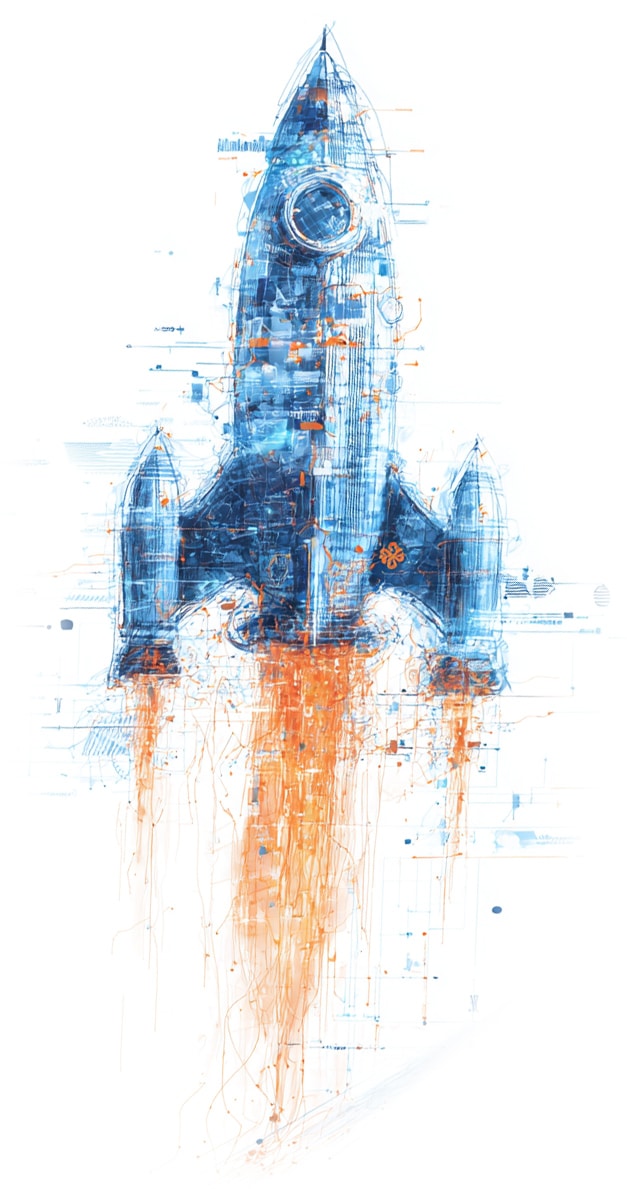The Final Resolution:
Why Smarter Entity Resolution Is the Hidden Key to Reliable AI – and Why Senzing Sets The Bar
Post by Gurpinder Dhillon

Leading researchers argue the field has reached an inflection point: data excellence, not just model metrics, is critical to advancing reliable, AI-ready systems. The choice is clear: don’t just build faster AI; build smarter, resolved AI.
Why Entity Resolution is the Foundation of AI-Ready Data
Bad or ambiguous identity data quietly undermines AI: duplicated people or vendors, over-merged records, missing or mislabeled relationships.
Empirical studies show that the core data-quality dimensions of completeness, accuracy, and consistency directly correlate with machine learning performance. “Garbage in, garbage out” isn’t a cliché, it’s measurable. Upstream data issues set off what researchers call a data cascade, meaning a small flaw at the start (like an unresolved entity) grows into a major, compounded problem by the time the AI uses it.
Generative AI is no exception. Hallucinations often trace back to poor grounding or fragmented sources… in other words, entity resolution problems. Surveys show that grounding via retrieval and knowledge graphs can reduce hallucinations when sources are well-structured and aligned.
A Turning Point In Entity Resolution
After 20+ years working with identity data, I’ve seen rigid rules, heavyweight pipelines, and fragile bespoke logic. Most looked promising in the lab; few endured real-world entropy.
That’s why I was skeptical when I kept hearing about the Senzing entity resolution engine. Then I dug in, and it delivered. It felt less like a toolkit and more like a rethinking of how entity resolution should work in production for AI and analytics.
What Modern Entity Resolution Must Do (and Where Senzing Sets the Bar)
Modern entity resolution must move beyond the fragility of rigid rules and the opacity of heavy, traditional ML pipelines. Senzing sets the bar for AI-ready data with these foundational capabilities.
- Principle-based AI (not brittle rules, not black boxes) – Senzing decisions are grounded in domain principles —the exclusivity, frequency, and stability behaviors of attributes. This avoids fragile bespoke logic and enables accurate matches on very small or very large datasets without pre-training or custom tuning. As a result, new data sources can be entity resolved without training or tuning – making adding data sources much faster with Senzing.
- Entity Centric LearningTM – This approach is essential for fraud detection because clever bad actors rarely use the same name or address, making traditional record-to-record matching ineffective. Unlike conventional methods, the Senzing approach continuously learns from all data variations to build a complete, evolving view of each entity, revealing hidden links and exposing relationships others miss. This is a key differentiator for detecting sophisticated fraud.
- Real-time resolution & sequence neutrality – Real life is streaming, not batch. Senzing is built for real-time entity resolution, revisiting earlier resolutions as new data arrives. Its sequence-neutral algorithms ensure consistent outcomes regardless of ingest order, which is essential for LLM grounding and reliable streaming AI systems.
- Relationship awareness (beyond “same/not-same”) – Senzing natively detects disclosed and discovered relationships (shared phones, addresses, emails). This reveals households, fraud rings, and risk networks that record matching only systems miss. This is a crucial accelerator for graph-based AI and advanced analytics.
- Explainability you can audit – Every why / why not / how is traceable so organizations can satisfy regulators and debug outcomes — without reverse-engineering a black box.
- Scale, speed, and privacy-first operation – Designed to handle billions of records with low-latency decisions, while supporting application-level encryption and selective field hashing to protect sensitive data. The unique Senzing unique approach maintains matching accuracy even when working with hashed fields, enabling privacy-by-design without compromising precision or performance.

Proof in the Real World: Code for America
A standout example: Utah’s Clean Slate implementation with Code for America. Using Senzing out-of-the-box (no training/tuning), the team processed over 3 million records across nearly 150 courts, consolidating them into ~1.2 million unique individuals.
The solution validated a 99.9% matching accuracy that outperformed expert human reviewers. This proved its superiority over manual or legacy processes, clearing eligibility for roughly 350,000 people.
Beyond accuracy, the deployment emphasized privacy controls and explainability, so stakeholders could trust the outcomes from day one.
When ER Is Embedded, Everything Works Better
Organizations that integrate entity resolution into their data and AI pipelines see compounding benefits:
- Models train faster and require less tuning, since the data is coherent.
- Insights are more precise, enabling better segmentation and targeting.
- Fraud detection shifts from reactive to proactive, linking subtle behavioral signals and obscure connections across seemingly unrelated variations. Instead of merely identifying fraud after it occurs, ER enables AI to spot emerging patterns and potential threats before significant damage is done, by creating a complete picture of individuals and their activities.
- Customer experiences feel smarter, because they’re powered by a unified understanding.
These gains are backed by research. According to Forrester, organizations that centralize identity and entity resolution as part of a data fabric architecture are 2.8x more likely to report improved AI performance and trust.3
How to Get Started (Fast, No Heroics)
- If you haven’t already, you can download and install the Senzing Desktop Evaluation Tool and test this on your own data in minutes… instructions here.
- Pick one high-value entity (people, vendors, providers).
- Don’t over-clean — let the engine learn from real-world messiness.
- Start with Senzing defaults (principle-based) and review explainable results.
- Wire the Senzing entity resolved graph into your agentic AI, RAG, knowledge graph, fraud, or analytics pipelines.
The Takeaway: Smarter Entity Resolution Powers Reliable AI
We all agree high-quality data is essential for AI. The part many miss is how to get there: you don’t get trustworthy, production-ready AI without great entity resolution.
Independent research shows that data excellence drives ML performance, and industry analysis confirms that data quality and governance are among the biggest blockers to generative AI adoption.
If your next AI milestone involves fewer hallucinations, better risk controls, and measurable business outcomes, the path runs through entity resolution. And if you need ER with accuracy that outperforms humans, that’s fast, explainable, and built for real-time — Senzing sets the bar. Don’t just build faster AI; build smarter, resolved AI.

Gurpinder Dhillon
Head of Data Partner Strategy & Ecosystem
Gurpinder Dhillon has over 20 years of experience in data management, AI enablement, and partner ecosystem development across global markets. Gurpinder is also a published author and frequent keynote speaker on AI ethics, master data strategy, and the evolving role of data in business innovation. He currently leads the strategic direction and execution of the Senzing data partner ecosystem.
Frequently Asked Questions (FAQs)
References
[2] Sambasivan et al. “Data Cascades in High‑Stakes AI.”
[3] Mohammed et al. “The Effects of Data Quality on Machine Learning Performance.”
[4] Huang et al. “A Survey on Hallucination in Large Language Models.”
[5] Forrester. “Data Quality Is Now The Primary Factor Limiting GenAI Adoption.”
[6] Senzing. “Principle‑Based Entity Resolution.”
[7] Senzing. “Sequence Neutrality.”
[8] Senzing Zendesk. “Entity Resolution Deep Dive – Sequence Neutrality.”
[9] Senzing. “Relationship Awareness.”
[10] Senzing. “Get Explainable Results With Entity Resolution.”
[11] Senzing. “Entity Resolution: Insights and Implications for AI Applications.”
[12] Senzing Zendesk. “Selective Field Hashing.”
[13] Senzing. “How To Protect PII in Your Entity Resolution System.”
[14] Senzing Zendesk. “Security and Data Encryption.”
[15] Senzing Case Study. “Code for America Transforms Lives”
[16] Code for America. “Technology and Expertise Enable Utah to Clear Records.”
[17] Senzing. “15‑Minute Quick Trial (Desktop).”
[18] Senzing. “One‑Day Proof of Concept.”

